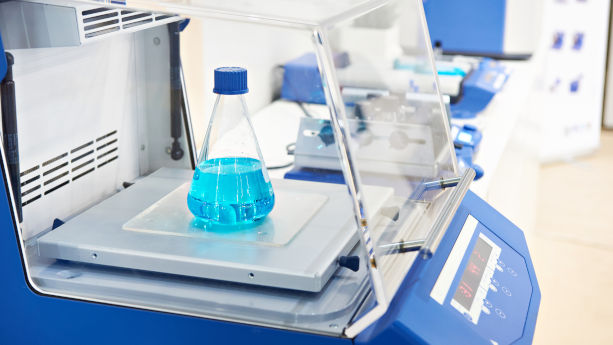
Do you intend to manufacture or sell products in the UK? If so, REACH compliance is likely required. In practice, REACH requires that your products don’t contain restricted chemicals, heavy metals, and other substances above the set limits. Examples include lead, cadmium, and various phthalates.
In this guide, we list some product categories covered by the UK REACH regulation in the United Kingdom and provide information on the differences between the pre-Brexit and post-Brexit REACH limits.
Note that this article does not apply to Northern Ireland as Northern Ireland still follows EU REACH.
Content Overview

FREE CONSULTATION CALL (US, EU & UK)
- Request a free 30-minute call with Ivan Malloci to learn how we can help you with:
- Find product requirements
- Certification and labeling
- Lab testing
What is UK REACH?
The UK REACH regulations regulate chemicals and heavy metals, in both their raw material and finished product form, found in most consumer products manufactured or sold in the UK. UK REACH also promotes alternate methods of assessment of possibly hazardous substances. The regulation affect importers, manufacturers, and distributors of consumer products.
The European Union (Withdrawal) Act 2018 allows EU-derived domestic legislation to continue to function as intended but as UK law. In the UK, the competent authority in this matter is the UK’s national regulator, the Health and Safety Executive (HSE).
Product scope
The UK REACH regulations cover most chemical substances and heavy metals in their standalone form, in mixtures, and in their form as an article (i.e. consumer products).
Examples of such consumer products include:
- Electronic products
- Toys
- Clothing apparel
- Furniture
Does UK REACH differ from EU REACH?
As previously mentioned, the UK REACH regulations replicate the EU REACH regulations, and that includes adopting its key principles (e.g. the “one substance, one registration” principle remains the same).
For instance, the UK’s REACH enforcement Regulations (2008) (as amended) is derived from the EU’s REACH regulation. Although subject to future amendments, it still refers to the latter’s content.
Thus, the UK has its own UK REACH regulations that are similar to its EU counterpart, and importers and manufacturers looking to engage in both markets ought to comply with both systems of regulations.
However, one ought to be vigilant in these matters as it is likely that the UK’s current REACH system will go through more legislative updates that may or might not differ from its EU counterpart.
Substance restrictions
The UK has a list of restricted substances that is similar to its EU counterpart, however, differences may exist. Thus, importers and manufacturers should look out for any updates on the list published on the HSE’s site.
Substances registration
Similar to the pre-Brexit context, importers and manufacturers of covered substances at one tonne or above per year must register their substances. Note that substances in their standalone form, in mixtures, and (in some cases) in a finished product should be registered.
Registrants are legally obligated to:
a. Collect information on the properties and use of their manufactured or imported substances that reaches one tonne a year, and
b. Assess the risks posed by the substance and its associated use
From 2021 onwards, said substances should be registered through the “Comply with UK REACH” service.
It should be noted that the UK REACH recognizes the EU REACH registrations. Thus, importers and manufacturers can refer to these grandfathered registrations to comply with the UK REACH requirements.
Additionally, EU REACH registrants that intend to manufacture or import their substances into the UK market for the first time have to submit a registration.
UK REACH substances restrictions
As previously mentioned, the UK REACH has its own database of restricted substances. Although largely identical, differences may exist and future updates can be expected. Thus, importers and manufacturers ought to be on the lookout for updates to the list.
Below is a table containing some of the listed substances by name and their UK and EU limits. This list is non-exhaustive.
| Substance name | UK substance limits (Source) | EU substance limits (you can find the information on the ECHA’s website) |
| DEHP, DBP, BBP, DIBP phthalates | Limited to concentrations under 0.1% by weight in toys, childcare items, and plasticised materials
Other conditions might apply |
Limited to quantities under 0.1% by weight in toys, childcare items, and plasticised materials
Other conditions might apply |
| Benzene | Limited to concentrations under 0.1% by weight for substances (inclusive of mixtures and articles), and limited to concentrations of its free state under 0.5% by weight in toys or its parts.
Other conditions might apply |
Limited to concentrations under 0.1% by weight for substances (inclusive of mixtures and articles), and limited to concentrations of its free state under 0.5% by weight in toys or its parts.
Other conditions might apply |
| Lead and its compounds | Limited to concentrations under 0.05% by weight in jewelry articles.
Other conditions might apply |
Limited to concentrations under 0.05% by weight in jewelry articles.
Other conditions might apply |
| Chromium VI compounds | Limited to concentrations equal to or below 0.0002% of the total dry weight of cement and cement-containing mixtures.
Other conditions might apply |
Limited to concentrations equal to or below 0.0002% of the total dry weight of cement and cement-containing mixtures.
Other conditions might apply |
| Cadmium and its compounds | Limited to concentrations under 0.01% by weight in articles and mixtures produced from synthetic organic polymers (i.e. plastic materials) like:
Other conditions might apply |
Limited to concentrations under 0.01% by weight in articles and mixtures produced from synthetic organic polymers (i.e. plastic materials) like:
Other conditions might apply |
| Toluene | Limited to concentrations under 0.1 % by weight where its substance or mixture is employed in adhesives
or spray paints and is intended for the general public. |
Limited to concentrations under 0.1 % by weight where its substance or mixture is employed in adhesives
or spray paints and is intended for the general public. |
| Substances in tattoo inks and permanent make up | Unavailable | Starting from 4 January 2022, limited concentrations are introduced for substances in tattoo inks and permanent make-up including:
|
Substances of Very High Concerns (SVHC)
UK REACH imposes special requirements for products with “substances of very high concern” (SVHCs). These are substances that have hazards with serious consequences (e.g. cancer-causing, harming fertility, or having other hazardous properties).
SVHC examples
The following substances might be seen as SVHCs:
a. Substances classified as carcinogenic, mutagenic, or toxic for reproduction (CMR) category 1A or 1B
b. Substances that are persistent, bio-accumulative, and toxic (PBT)
c. Substances that are very persistent and very bio-accumulative (vPvB)
SVHC substances can be found in consumer products, including the following:
- Toys
- Paints
- Hair spray
- Household detergents
Importers and manufacturers duties
Importers and manufacturers should note the obligations that follow when their article contains substances from the Candidate List.
Such obligations arise when a substance from the Candidate List is present in such articles in quantities totaling over 1 tonne annually per producer or importer or is present in such articles above concentration levels of 0.1 % w/w.
Supplier duties for substances included in the Candidate List are:
a. The duty to communicate information on listed substances contained in supplied articles
b. If produced or imported, the duty to notify HSE of listed substances in supplied articles
c. The duty to communicate information via provision of a safety data sheet for listed substance(s) and substance(s) in mixtures to consumers
Supplier duties for substances included in the Authorization List must look to the authorisation provisions of UK REACH to determine whether they can continue to use the substance or apply for a UK REACH authorisation.
Post-Brexit, the UK REACH Candidate List adopted SVHCs contained in the EU REACH Candidate List. However, over time, differences may be evident. Thus, manufacturers, importers, and suppliers ought to be on the lookout for changes.
UK REACH lab testing companies
Lab testing is generally necessary for ensuring compliance with the UK REACH regulation. A lab test report helps to ascertain if a material contains banned or restricted substances.
The following are lab testing companies that offer tests against UK REACH:
- Labcorp
- Intertek
- DEKRA UK
You will obtain a UK REACH test report upon completion. This document lists the applied tests and the test result for each. As such, a UK REACH test report can be used to demonstrate that your product is compliant – which can be requested by HM Revenue & Customs, Amazon UK, or other entities.v
Note: Contains public sector information licensed under the Open Government Licence v3.0.















